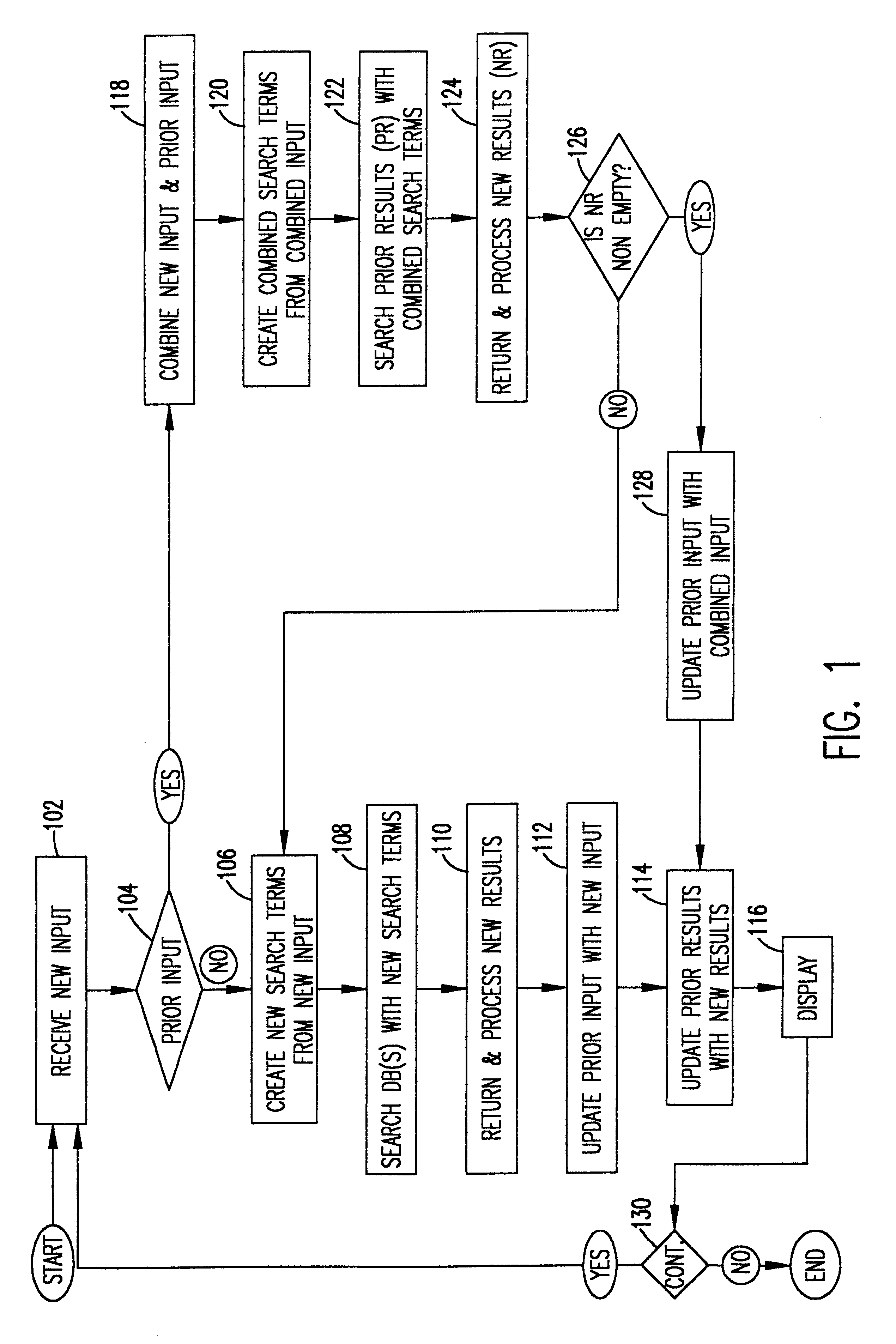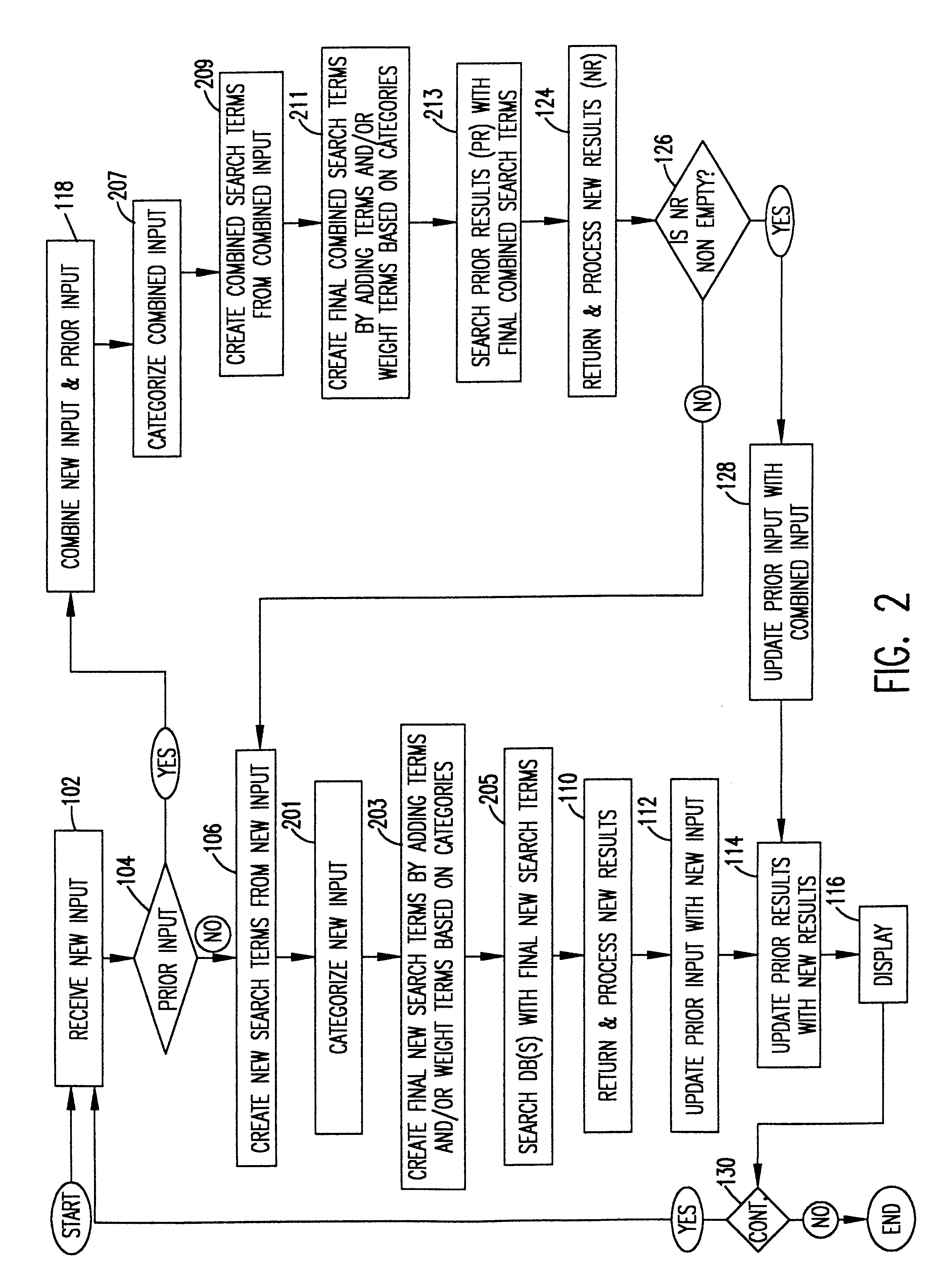Automatic topic identification and switch for natural language search of textual document collections
a textual document collection and topic identification technology, applied in the field of automatic topic identification and switch for natural language search of textual document collection, can solve the problems of large number of responses, laborious search modes, and user difficulty in determining if the desired answer is among
- Summary
- Abstract
- Description
- Claims
- Application Information
AI Technical Summary
Problems solved by technology
Method used
Image
Examples
Embodiment Construction
Referring now to the drawings, and specifically to FIG. 1, user input query in the form of free-form natural language text is received at input block 102. The user query may be either typed in on a keyboard or spoken into a microphone. In the case of spoken input, the system receiving the user query would include a speech recognition system, such as IBM's ViaVoice system, to produce an electronic text document that is processed by the system. In decision block 104, a determination is made whether or not there has been prior input (i.e., is the input query provided in block 102 the first input query, or a second or subsequent input query?). If there has been prior input query, the new input query is combined with previous input query(ies) from the session history maintained by the system, as described in more detail below.
Assuming that this is the first input query, new search terms are created in function block 106 based only on the free-form natural language input. This is done usi...
PUM
 Login to View More
Login to View More Abstract
Description
Claims
Application Information
 Login to View More
Login to View More - R&D
- Intellectual Property
- Life Sciences
- Materials
- Tech Scout
- Unparalleled Data Quality
- Higher Quality Content
- 60% Fewer Hallucinations
Browse by: Latest US Patents, China's latest patents, Technical Efficacy Thesaurus, Application Domain, Technology Topic, Popular Technical Reports.
© 2025 PatSnap. All rights reserved.Legal|Privacy policy|Modern Slavery Act Transparency Statement|Sitemap|About US| Contact US: help@patsnap.com



